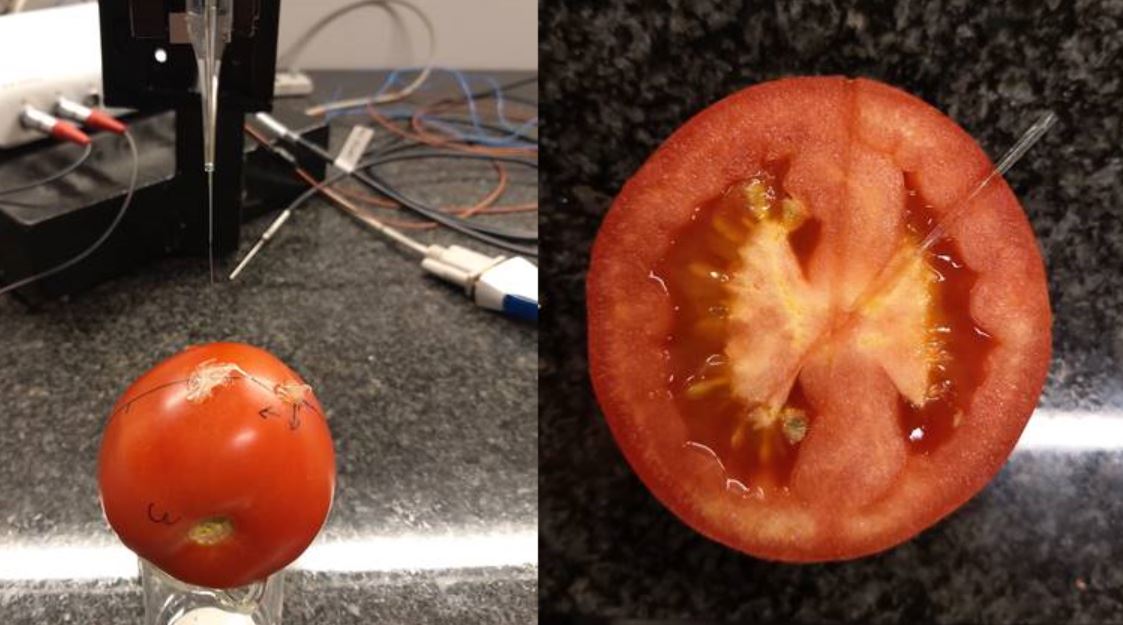Research visit from KU Leuven on oxygen profiling in tomato fruits
Some month ago, Pieter Verboven from KU Leuven contacted me to see if I was interested in joining a concrete collaboration on oxygen profiling in tomato fruits. We have previously worked together on small project – most of them successful but also some failures in between. But I thought how difficult can it be to obtain a few microsensor profiles of oxygen distribution in tomato fruits? And then Hui Xiao showed up with a box full of tomatoes and Tong was eager to join in order to make the visit successful. They have now worked together in more than a week and Hui has achieved most of the objectives for the visit.
The data has not yet been analysed but the overall conclusion is that the model needs just a little bit of fine-tuning. To my surprise, there are huge gradient in oxygen – particularly in ripe tomatoes – going from tissue oxygen status close to air equilibrium to below detection limit, i.e. tissue anoxia! Moreover, the scar acts as a snorkel; if the is blocked by e.g., petroleum jelly the fruit turns anoxic within hours. The large internal gradients are due to a combination of differences in porosity and oxygen demand between the various tissues.
I am looking very much forward to see the study published in a not too distant future!

The tomoto fruit is composed of various tissues and Hui already knew that the different tissues have different respiration and diffusivity. Therefore, her model had also predicted large differences in oxygen concentration inside the fruit.

We ordered a number of custom-made oxygen sensors from Unisense. The tip diameter was only 50 µm and with the sharp tip, it was well suited to penetrate the fruit. Nevertheless, a couple of sensor broke during measurements...
The data has not yet been analysed but the overall conclusion is that the model needs just a little bit of fine-tuning. To my surprise, there are huge gradient in oxygen – particularly in ripe tomatoes – going from tissue oxygen status close to air equilibrium to below detection limit, i.e. tissue anoxia! Moreover, the scar acts as a snorkel; if the is blocked by e.g., petroleum jelly the fruit turns anoxic within hours. The large internal gradients are due to a combination of differences in porosity and oxygen demand between the various tissues.
I am looking very much forward to see the study published in a not too distant future!
The tomoto fruit is composed of various tissues and Hui already knew that the different tissues have different respiration and diffusivity. Therefore, her model had also predicted large differences in oxygen concentration inside the fruit.
We ordered a number of custom-made oxygen sensors from Unisense. The tip diameter was only 50 µm and with the sharp tip, it was well suited to penetrate the fruit. Nevertheless, a couple of sensor broke during measurements...

